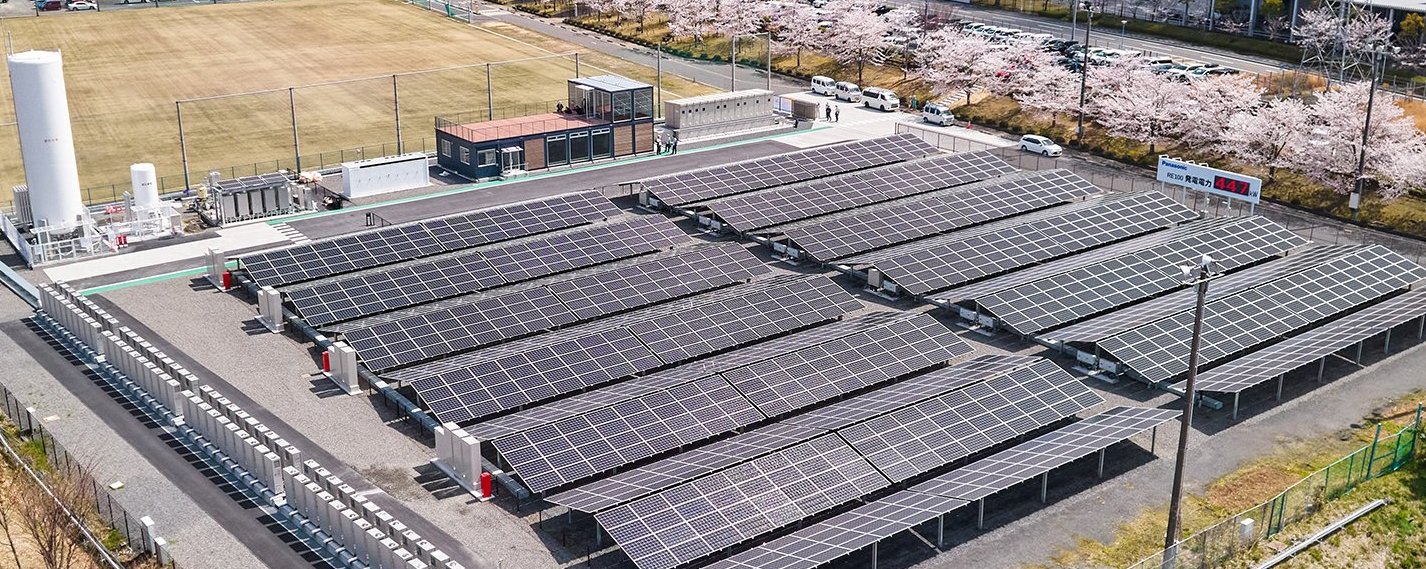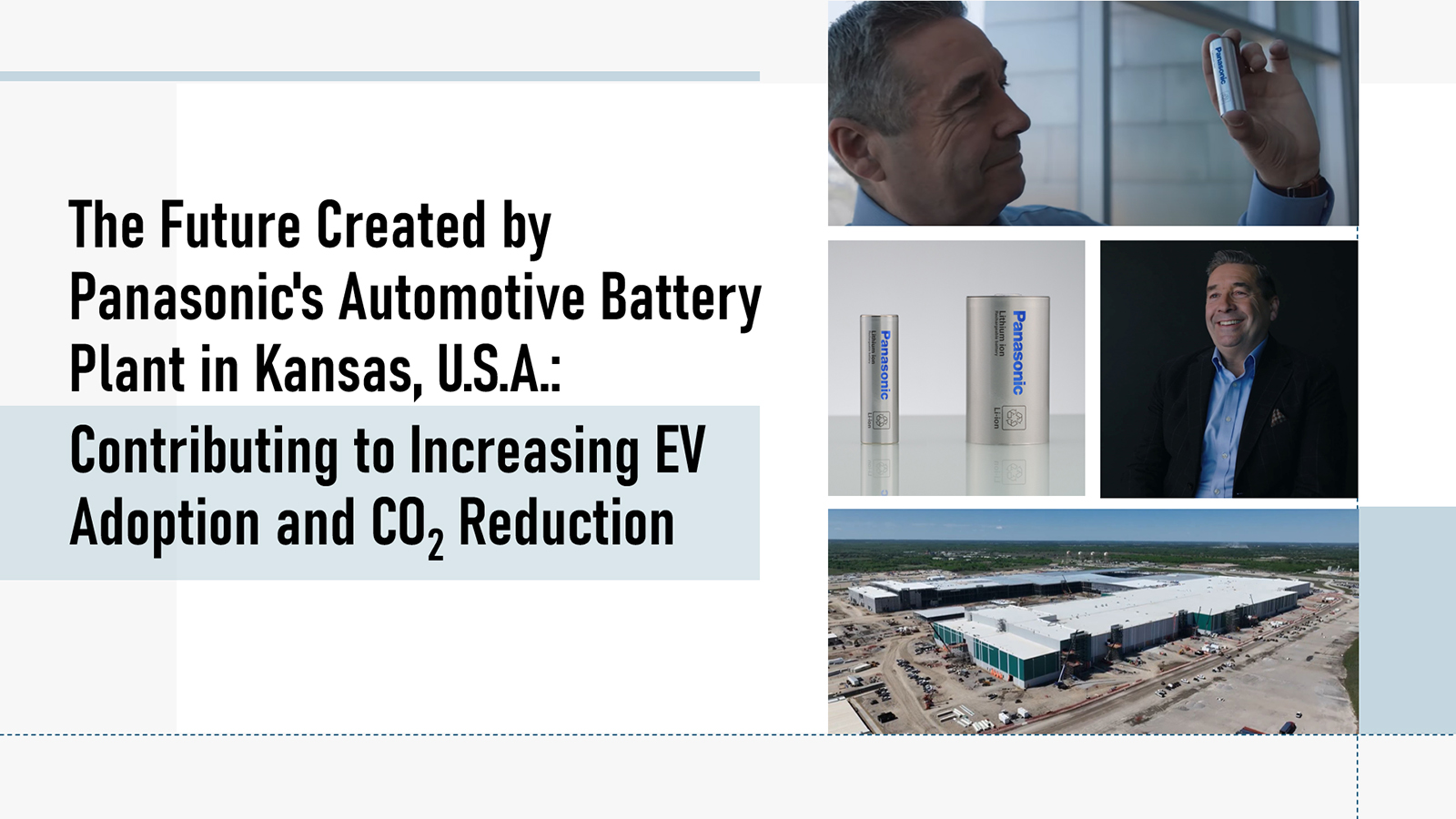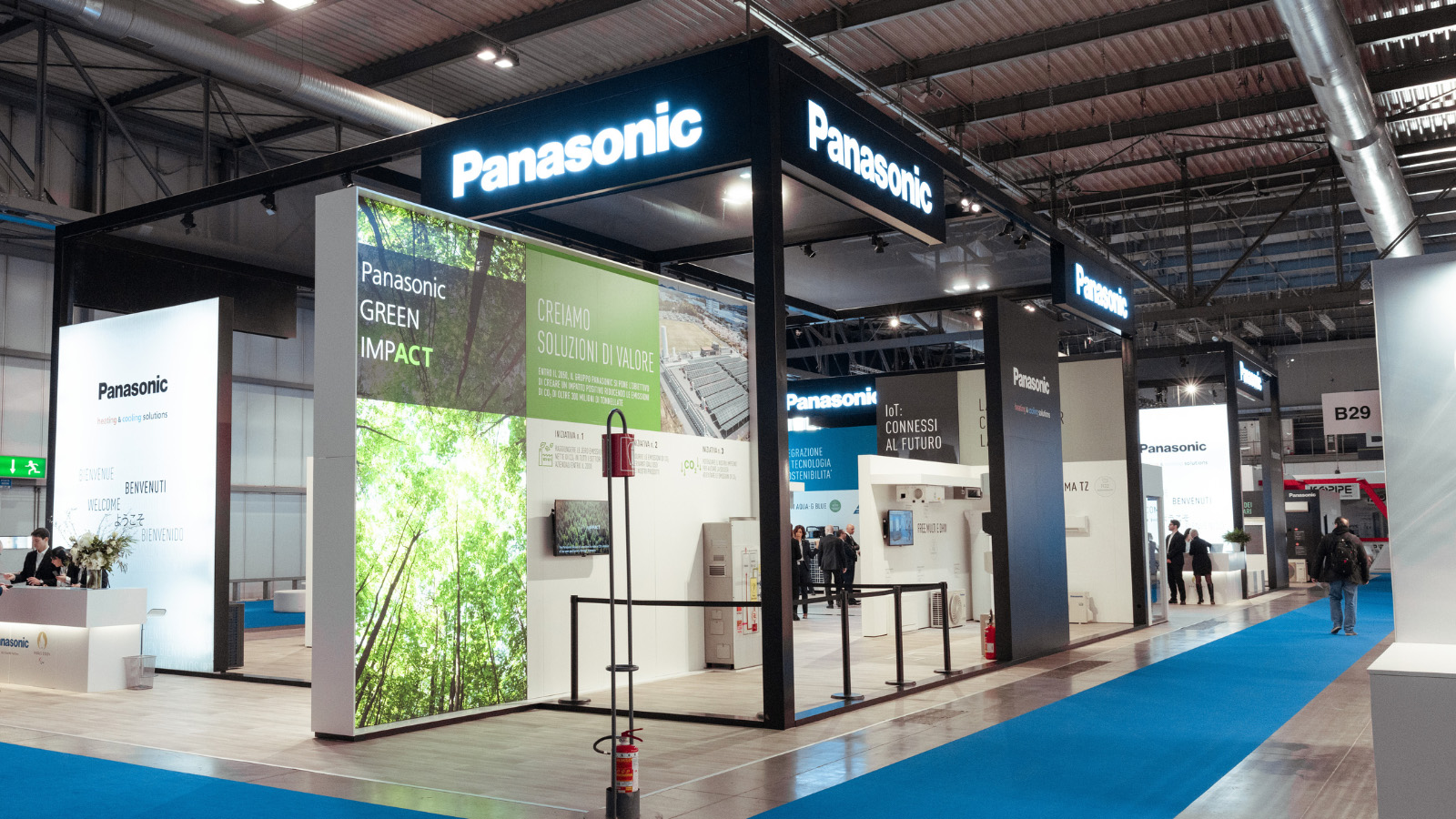
Traditional power generation in industrialized countries relies on large, centralized power plants distributing electricity over long distances to remote locations. As well as being prone to power loss during transmission, this kind of infrastructure is vulnerable to extreme weather and natural disasters. Typhoons in Japan sometimes bring down overhead power lines, and the 2011 Great East Japan earthquake caused disruption to power supplies as far away as Tokyo, more than 500kms from the epicenter.
The growing need to protect the environment and avoid climate change is an additional factor prompting leading companies like Panasonic to re-think the ways electricity is produced, stored and used. Accordingly, there is increased focus on the "decentralization" of power generation and the use of renewable energy sources such as solar power and wind. However, these are inherently unstable given their dependence on the weather, and it has been difficult until now to store electricity in large quantities over long periods of time.
Recent advances in solar panel and fuel cell technology, many of them spearheaded by Panasonic, are bringing the goal of abundant clean energy generated from renewable sources much closer. At its Kusatsu manufacturing plant in Japan's Shiga prefecture, Panasonic is showcasing these advances and providing a glimpse into the future of clean power in a trial facility believed to be the first of its kind in the world.
One part of the Kusatsu plant - a Panasonic factory producing fuel cells - has been turned into a huge proof of concept designed to verify the technical and commercial viability of locally-produced, clean energy. The site has been blanketed with solar panels and equipped with hydrogen fuel cells, both of which generate the electricity the plant needs, and huge batteries to store and release surplus power when needed.
Solar panels and hydrogen fuel cells at the Kusatsu plant. In production, the panels would be mounted on the factory roof.
The aim of this approach to the supply of power, explains a Panasonic spokesperson, is to decouple the generation of electricity from the demand for it (what it calls "time shift") and produce it where it is most required ("place shift"). The demonstration constitutes one of a range of Panasonic activities inspired by the company's membership of the RE100 (Renewable Electricity 100%) program,² a global corporate initiative bringing together hundreds of large and ambitious businesses committed to running their facilities on 100% renewable electricity.³
The solar panels at the Kusatsu plant generate a maximum of 570 KW of electricity; these are complemented by 99 of the latest-generation compact hydrogen fuel cells, generating a total of 495 KW. The lithium-ion storage batteries are capable of storing and providing around 1.1 MWh of surplus power on demand. A key design feature of the proposed solution is that in production, the solar panels should take up no more space than the roof area of the target facility.
The power output of the three energy sources at the plant is optimized to ensure a stable supply independent of weather conditions. On a typical day, around half of the required power might be generated by the solar panels, with the bulk of the remainder coming from the hydrogen fuel cells and a small amount from the storage batteries. The system is modular, and can be easily expanded through the installation and linking of additional solar panels and fuel cells.
Panasonic is using a proprietary energy management system to control the whole process. This currently monitors the changing demand for power at the plant; in the future, it will also predict the amounts and patterns of solar power generation based on highly accurate weather forecast data. Using this information, the system will determine the amount of electricity that needs to be provided via each source.
The deployment of cutting-edge technologies and systems often necessitates complex or time-consuming maintenance processes. By contrast, easy support has been designed into the system being showcased at Kusatsu; maintenance can be conducted on individual fuel cells without taking them off-line, for example.
Panasonic sees the flexibility and modularity of the system as key, making it viable for a range of manufacturing sites and other facilities of varying sizes. It envisages rolling out the solution initially at its own factories as a prelude to commercializing and launching the system in 2023. The company plans to collaborate with governments, industry associations and other companies to facilitate this.
In the meantime, Panasonic is cooperating in the supply of hydrogen-sourced energy for other projects. These include the futuristic Harumi Flag urban complex, a "hydrogen smart town" in downtown Tokyo; a facility originally built to house athletes and officials attending the Tokyo 2020 Olympic & Paralympic Games. The company is also deploying its clean energy solutions in three "Sustainable Smart Towns" that were recently inaugurated in Japan - Fujisawa SST, Tsunashima SST, and Suita SST.
Longer term, Panasonic plans to make its renewable energy solution available overseas, including in China and in Europe, as part of its ambitious GREEN IMPACT program. This aims to make a material contribution to carbon neutrality across the globe by transforming the provision of energy and by reducing the demand for it.
In an unpredictable world, Panasonic is bringing stability to the supply of clean energy, and leading the way in the protection of our planet and its scarce resources.
1: According to research by Panasonic, as of March 31, 2022; the first-ever demonstration of hydrogen being used exclusively as fuel for in-house generation of the electricity required for operation of an individual factory.
2: The references to RE100 in this article do not imply endorsement or certification of this Panasonic initiative by the RE100 global initiative.
3: It is possible to achieve RE100 standards using green hydrogen generated from renewable sources, including via the use of energy attribute certificates. The hydrogen being used in the Kusatsu demonstration is currently not derived from renewable sources, but Panasonic aims for the solution to consume only hydrogen from such sources once it goes into production.
# # #
Disclaimer:
We would like to note that Panasonic Newsroom is not a place to address personal Customer Service issues. Even though this is not the forum, Panasonic is always eager to resolve your concerns. Our local customer services contacts can be found at Global Support or you can see our list of Social Media Accounts to find the right channel for your queries and concerns.
Related Links
Related News
- [Press Release] Panasonic to Begin Operating H2 KIBOU FIELD Demonstration Facility Utilizing Pure Hydrogen Fuel Cell Generators (Apr 27, 2022)
- [Press Release] Why Hydrogen Is Essential in the Global Journey Towards Net Zero (Nov 09, 2021)
- Panasonic Launches 5 kW Type Pure Hydrogen Fuel Cell Generator (Oct 1, 2021)
- [Press Release] Panasonic to Demonstrate RE100 Solution Using Pure Hydrogen Fuel Cell Generators (May 24, 2021)
- [Press Release] Panasonic Joins RE100 Aiming for Business Operations with 100% Renewable Energy (Aug 30, 2019)








